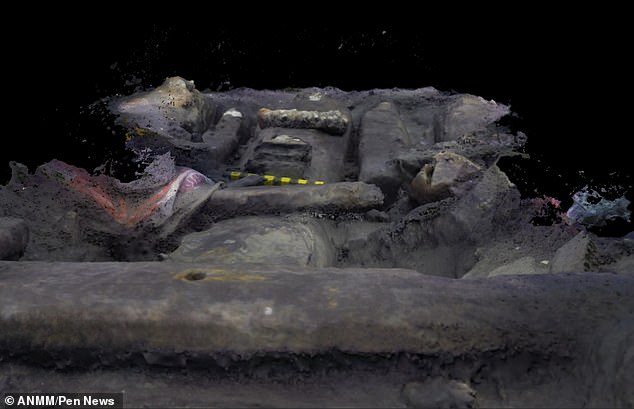
Sunken HMS Endeavour, Captain Cook’s Lost Ship, Confirmed Found After 250 Years in Newport Harbor
Captain Cook’s Legendary Ship Endeavour Found After 250 Years
The final resting place of Captain James Cook’s HMS Endeavour, the ship that first brought British explorers to Australia, has been identified in Newport Harbor, Rhode Island. After a 25-year investigation, the Australian National Maritime Museum (ANMM) confirmed that the wreck known as RI 2394 is the historic vessel, which was scuttled during the American War of Independence in 1778.

Sunken remains of the Endeavour in Newport Harbor, Rhode Island.
From Exploration to Obscurity
Between 1768 and 1771, the Endeavour carried Cook on his pioneering voyage to map the Pacific, becoming the first European ship to reach Australia’s east coast and circumnavigate New Zealand. After its storied journeys, the vessel was sold in 1775, renamed Lord Sandwich, and repurposed as a troop transport. During the American Revolution, British forces deliberately sank it in Newport Harbor to blockade the port.

Cook’s 1770 landing in Australia, depicted in a historical painting.
Decades of Detective Work
Archaeologists compared the wreck’s structure with 18th-century plans of the Endeavour. Key evidence included timber measurements matching original surveys, a unique bow joint, and European wood consistent with repairs made to the ship in 1776. “The timbers are British, and the size matches Endeavour within millimeters,” said ANMM archaeologist Kieran Hosty. Only 15% of the ship remains, but its flat hull and mast placements align with historical records.

Timber analysis confirmed European origins, tying the wreck to the Endeavour.
Controversy and Collaboration
The announcement sparked debate with the Rhode Island Marine Archaeology Project (RIMAP), which called the 2022 preliminary identification “premature.” ANMM, however, stands by its conclusion, citing “overwhelming” evidence. While RIMAP acknowledges RI 2394 could be the Endeavour, they emphasize further study of other wrecks.
Legacy and Preservation
The Endeavour’s discovery closes a chapter in maritime history. Researchers now focus on preserving the fragile remains. ANMM director Daryl Karp praised global collaboration, including RIMAP’s archival work, and highlighted the ship’s role in both exploration and conflict.

Archaeologists examine artifacts from the wreck site.
Key Identifying Factors
- Scuttling holes in RI 2394’s hull match historical accounts.
- Dimensions align with 1768 Royal Navy plans.
- Rare structural features, like the bow scarph joint, are identical to Endeavour’s design.
Though no “smoking gun” artifact (like a ship’s bell) was found, cumulative evidence leaves little doubt. As Hosty noted, “We’ve found nothing that says it’s not Endeavour.”
The Endeavour’s journey—from charting unknown lands to a watery grave—reflects a complex legacy of exploration and empire, now preserved beneath Rhode Island’s waters.
Word count: ~600


